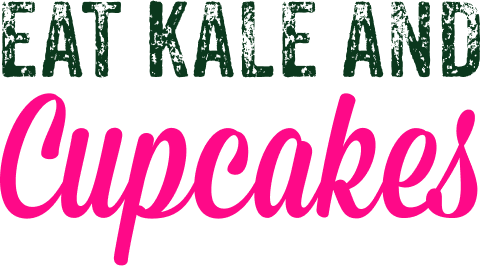By LCWNS team
How to Wean Your Baby
Everyone knows that good nutrition is essential for children to grow healthy and strong. But as a new parent, you may feel overwhelmed with information surrounding the best way or the best foods to feed your infant. For the first few months of life, the answer is pretty clear cut- breastfeeding and/or formulas are the way to go, exclusively. But what happens when it’s time to transition to more exciting foods?
What Is Baby Led Weaning?
Baby led weaning (or baby led feeding) is one way to introduce your infant to solid foods,1 where he or she is essentially in charge of the eating process. Picture the infant enjoying his/her first birthday cake: messy hands covered in frosting, given free rein to eat (or destroy) their dessert as they please … that would be an example of baby led weaning. This self-feeding method allows the infant to control what and how much to consume. The foods offered should be large enough for the infant to grasp and to prevent choking and soft enough that they can be easily mashed. Examples include pasta, half of a banana, steamed fruits or vegetables, and finger sized strips of beef (parents.com). Many parents are opting for this method due to its benefits in developing fine motor skills and hand-eye coordination, learning to regulate appetite and food intake, and in providing exposure to a variety of foods, flavors, and textures1, which may prevent picky eating later on as the child matures. Additionally, baby led weaning encourages participation in family meals as the foods offered are simply those you already have on your plate1.
Spoon Fed Weaning
In contrast, parents have the option to spoon feed their child, typically beginning with purees and progressing to soft and then solid foods2. In spoon fed weaning, the parent is responsible for feeding the infant and responding to signals of hunger/fullness. An advantage of this method is less mess, particularly when compared to baby led weaning. Parents may also feel more at ease regarding the potential for choking as well as knowing their baby is getting enough food, though research shows nutritional deficiencies and choking risk do not differ between baby led and spoon fed weaning3, 4.
When To Start Baby Led Weaning
Before deciding whether to use baby led weaning or spoon-fed weaning (or a combination of the two), it is important to evaluate your baby’s readiness to experiment with solid foods. Developmental milestones, such as head and neck/postural control and the ability to sit upright without support are prerequisites to baby led and spoon fed weaning. Other signs that your infant is ready for more advanced foods include the following5:
- Able to push food to the back of the mouth and swallow
- Bringing objects to their mouth
- Pincer grasp (thumb and forefinger) present
- Opens mouth when offered food
- Shows interest in foods served for the rest of the family (i.e. looking at what’s on your plate, reaching for your food, etc.)
Typically, these indicators occur when the child is around 6 months old; however, the decision to start offering complimentary foods should be made with the aforementioned markers in mind6.
Baby Led Weaning Foods
It is also important to note that baby led weaning and spoon-fed weaning do not necessarily address the nutritional needs of the growing infant. While breastfeeding and formula feedings usually continue during this transition period, complementary weaning foods should be nutrient and energy-dense, high in iron and zinc, and come from a variety of food groups7. Additionally, the USDA Dietary Guidelines for Americans recommend limiting added sugars and salt7. Regardless of which method you choose, it is important that the foods be safe and appropriate, and that supervision is provided at all times. Strategic introduction of allergens and avoiding “choke foods” are other factors to keep in mind. 7, 8
Key Takeaways
- Baby led weaning and spoon-fed weaning are two ways to introduce and transition your infant to foods other than breast milk or formula
- Certain developmental milestones must be present before an infant can transition to solid foods
- An adult should be present while the infant is eating
- Choking hazards include anything that can get lodged in the trachea (i.e., popcorn, hot dogs, whole grapes, nuts, anything clumpy/sticky/dry)
- A registered dietitian can help you navigate this exciting but often scary time
References
[1] Helwig, J., & Carrus, E. (2023, April 21). Is baby-led weaning right for your baby?. Parents. https://www.parents.com/baby/feeding/solid-foods/dos-and-donts-of-baby-led-weaning/
[2] Mother and Baby. (2023, April 4). What is spoon-fed weaning?. Mother and Baby.
https://www.motherandbaby.com/baby/weaning/what-is-spoon-fed-weaning/
[3] Utami, A. F., & Wanda, D. (2019). Is the baby-led weaning approach an effective choice for introducing first foods? A literature review. Enfermería Clínica, 29, 87–95. https://doi.org/10.1016/j.enfcli.2019.04.014
[4] Rice, D. K. (2019, March). Children’s nutrition: Embracing baby-led weaning. Today’s Dietitian. https://www.todaysdietitian.com/newarchives/0319p10.shtml
[5] Centers for Disease Control and Prevention. (2023, June 27). When, what, and how to introduce solid foods. Centers for Disease Control and Prevention. https://www.cdc.gov/nutrition/infantandtoddlernutrition/foods-and-drinks/when-to-introduce-solid-foods.html
[6] Start solid food based on what your baby can do, not how old she is. Ellyn Satter Institute. (n.d.-b). https://www.ellynsatterinstitute.org/family-meals-focus/78-baby-led-weaning/
[7] Dietary guidelines for Americans 2020-2025. (n.d.). https://www.dietaryguidelines.gov/sites/default/files/2021-03/Dietary_Guidelines_for_Americans-2020-2025.pdf
[8] Centers for Disease Control and Prevention. (2022, February 25). Choking hazards. Centers for Disease Control and Prevention. https://www.cdc.gov/nutrition/infantandtoddlernutrition/foods-and-drinks/choking-hazards.html
[9] Feed in the right way for your child’s stage of development. Ellyn Satter Institute. (n.d.-a). https://www.ellynsatterinstitute.org/how-to-feed/child-feeding-ages-and-stages/








